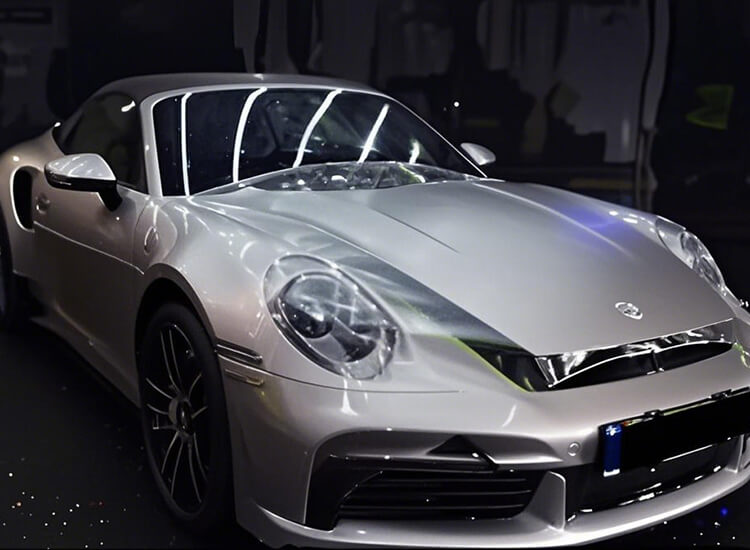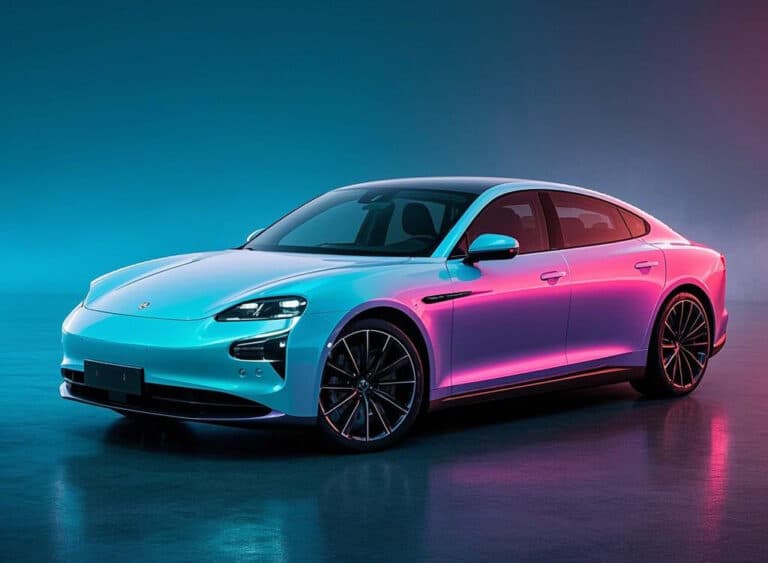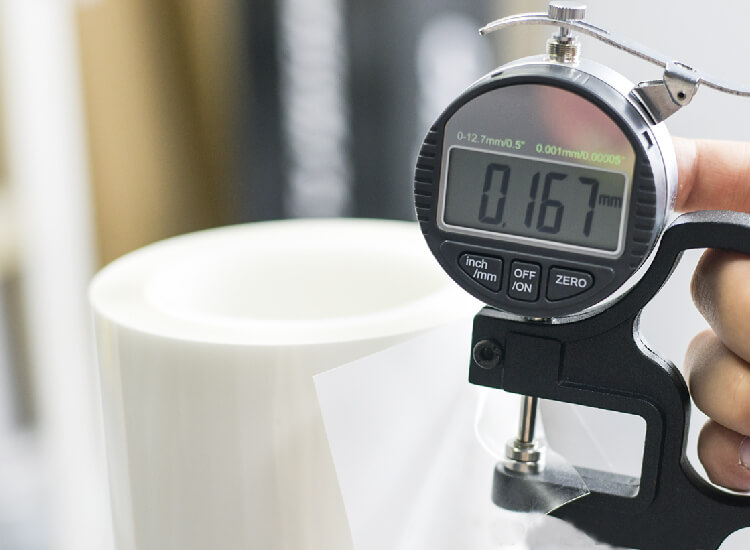8 Effective Ways to Protect Your Car Paint from Sun Damage
How to keep their car’s appearance new and clean is an important thing for many vehicle owners. One significant threat to your car’s exterior is prolonged exposure to the sun’s ultraviolet (UV) rays, which can lead to fading, oxidation, and deterioration of the paintwork. Implementing effective strategies to shield your car’s paint from sun damage is essential for preserving its aesthetic appeal and resale value. This comprehensive guide lists 8 methods to protect your vehicle’s paint, with a particular focus on the benefits of Paint Protection Film (PPF).

Learn About UV Radiation
What Is UV Radiation?
UV radiation, or ultraviolet radiation, is a form of electromagnetic energy emitted naturally by the sun. While it’s invisible to the human eye, it has enough energy to cause chemical reactions—this is the same type of radiation responsible for sunburns on human skin. Here are three main UV rays: UVA, UVB, and UVC. The earth’s atmosphere filters out UVC, but UVA and UVB rays reach the surface and can cause damage over time.
When it comes to your car, prolonged exposure to UV rays can take a serious toll. Modern automotive paint is made of several layers, including a clear coat, a base coat, and a primer. The clear coat is designed to protect the layers beneath it, but it’s not invincible. Without adequate protection, UV rays begin to break down the chemical bonds in the paint.
| UV Type | Wavelength Range (nm) | Percentage of Total UV Radiation | Penetration Level | Effect on Car Paint | Damage Severity |
| UVA | 315 – 400 | ~95% | Deep penetration | Causes paint fading, oxidation, and clear coat deterioration over time | Severe |
| UVB | 280 – 315 | ~5% | Medium penetration | Contributes to surface degradation, color fading, and paint dullness | Moderate |
| UVC | 100 – 280 | Negligible (blocked by ozone layer) | Does not reach Earth | No real effect on car paint under normal atmospheric conditions | Minimal |
How Does It Impact Car Paint?
The sun might feel warm and inviting, but its ultraviolet (UV) rays can be relentless enemies of your car’s exterior. Over time, consistent exposure to sunlight begins to degrade the molecular structure of your vehicle’s paint. What starts as a subtle shift in appearance can gradually evolve into noticeable and irreversible damage.
One of the most immediate and visible effects is color fading. Vibrant shades—particularly reds, yellows, and blues—are especially prone to this. As UV rays bombard the paint surface, they gradually strip away the depth and intensity of the color, leaving it looking washed out and lifeless.
Another major issue caused by UV exposure is oxidation. When the top layer of paint is compromised, it starts to react with the oxygen in the atmosphere. This chemical reaction gives the surface a dull, chalky appearance that robs the vehicle of its glossy, polished look.
Perhaps the most concerning form of damage is the deterioration of the clear coat, the transparent layer that serves as the paint’s first line of defense. Prolonged exposure to sunlight can cause this protective barrier to become cloudy, flake off, or develop tiny cracks. Once that clear coat starts to break down, your vehicle not only looks aged but becomes even more vulnerable to further damage from the elements.
Understanding how UV radiation impacts your car’s finish is the first step toward taking proper precautions. The sooner you act, the better chance you have of preserving your vehicle’s showroom shine for years to come.
8 Methods to Protect Your Car Paint from Sun Damage
Method 1: Regular Car Washing
Consistent car washing is a fundamental step in protecting your vehicle’s paint from sun damage. Dirt, bird droppings, and other contaminants can adhere to the paint surface, and when exposed to sunlight, these substances can cause staining and etching. By washing your car regularly with a pH-balanced car shampoo, you remove these harmful elements, preventing them from baking into the paint under the sun’s heat. This practice not only maintains the cleanliness of your car but also preserves the integrity of the paintwork.

Method 2: Applying Car Wax
Applying high-quality car wax serves as a protective barrier between your car’s paint and environmental elements, including UV rays. Wax enhances the paint’s resistance to oxidation and fading by reflecting sunlight away from the surface. Regular waxing, typically every three to four months, ensures continuous protection and imparts a glossy finish to your vehicle. This layer of defense is crucial in prolonging the vibrancy and longevity of your car’s paint.

Method 3: Parking in Shaded Areas
Minimizing direct sun exposure by parking in shaded areas can significantly reduce the risk of UV-induced paint damage. Utilizing covered parking spaces, garages, or natural shade helps maintain the paint’s color and prevents the interior from overheating. While parking under trees offers shade, be mindful of potential hazards like sap and bird droppings, which can harm the paint if not promptly removed.

Method 4: Utilizing Car Covers
Using a car cover is an effective strategy to protect your vehicle’s paint from the sun, especially when shaded parking isn’t available. A high-quality, UV-resistant car cover acts as a physical shield against sunlight, dust, and other environmental pollutants. Ensure the cover is made from a breathable material to prevent moisture buildup, which can lead to mold or mildew. Proper use of a car cover preserves the paint’s condition and overall appearance.

Method 5: Applying Paint Protection Film (PPF)
For superior and long-lasting protection, applying Paint Protection Film (PPF) is highly recommended. PPF is a transparent, durable urethane material applied to the car’s exterior surfaces, offering robust defense against UV rays, scratches, and road debris. One of the standout features of modern PPF is its self-healing properties, allowing minor scratches and swirl marks to disappear when exposed to heat.

Method 6: Applying Ceramic Coating
Ceramic coatings provide a hard, protective layer over your car’s paint, enhancing its resistance to UV damage, oxidation, and chemical contaminants. This nano-ceramic layer bonds with the paint, creating a hydrophobic surface that repels water and dirt, making the car easier to clean. Ceramic coatings also enhance the paint’s gloss and depth, contributing to a showroom-like finish. While they don’t offer the same level of impact protection as PPF, ceramic coatings are excellent for UV resistance and maintaining the paint’s aesthetic appeal.
Method 7: Regular Maintenance and Inspection
Ceramic coatings provide a hard, protective layer over your car’s paint, enhancing its resistance to UV damage, oxidation, and chemical contaminants. This nano-ceramic layer bonds with the paint, creating a hydrophobic surface that repels water and dirt, making the car easier to clean. Ceramic coatings also enhance the paint’s gloss and depth, contributing to a showroom-like finish. While they don’t offer the same level of impact protection as PPF, ceramic coatings are excellent for UV resistance and maintaining the paint’s aesthetic appeal.
Method 8: Combining Protective Measures
For comprehensive protection, consider combining multiple methods. For instance, applying PPF to high-impact areas and a ceramic coating over the entire vehicle can provide both physical and chemical protection. This combination leverages the strengths of both products, offering enhanced defense against UV rays, environmental contaminants, and minor abrasions. Consult with a professional detailer to determine the best protective strategy tailored to your vehicle and usage patterns
Why Is PPF the Best Way?
Paint Protection Film (PPF) stands out as the most effective solution. Unlike waxes or ceramic coatings, which wear off over time, high-quality PPF creates a durable, invisible barrier that blocks harmful UV rays and prevents oxidation, color fading, and clear coat deterioration.
PPF is made from advanced thermoplastic polyurethane (TPU) that resists yellowing and heat damage, maintaining a fresh, glossy appearance for years. It not only preserves the paint but also adds value by reducing the need for repainting or touch-ups. Modern car paint protection film is self-healing, meaning light scratches and swirl marks disappear with heat from the sun or engine.
How Self-Healing PPF Works
Self-healing PPF contains elastomeric polymers that enable the film to revert to its original state when subjected to heat, such as sunlight or warm water. When the film incurs minor abrasions, these polymers respond by smoothing out the imperfections, effectively “healing” the surface. This technology ensures that your car maintains a flawless finish with minimal maintenance.
More Benefits of Self-Healing PPF
-
Superior Surface Protection: PPF acts as a robust barrier against physical damage, including scratches, chips, and dents from road debris.
-
UV and Environmental Defense: The film provides excellent protection against UV rays, preventing paint fading and discoloration. It also shields the paint from contaminants like bird droppings and tree sap.
-
Enhanced Resale Value: Maintaining the exterior in pristine condition can significantly boost your vehicle’s resale value.
-
Cost-Effective Maintenance: While the initial investment in PPF might be higher, it saves money in the long run by reducing the need for frequent paint touch-ups or repairs.
-
Invisible Protection: PPF is virtually invisible once applied, preserving the car’s original paint color and finish while providing enhanced protection.
Mistakes You Should Avoid in Car Paint Protection
Incorrect Washing Techniques: Using harsh detergents or abrasive materials can strip protective layers and scratch the paint. Always opt for automotive-specific cleaning products and soft microfiber cloths.
Neglecting Regular Maintenance: Failing to wash and wax your car regularly can lead to the buildup of contaminants that accelerate paint degradation.
Using Low-Quality Protection Products: Investing in subpar waxes or sealants may not provide adequate protection and can degrade more quickly, necessitating more frequent applications.
Conclusion: Long-Term Maintenance for Sun Protection
Protecting your car’s paint from sun damage requires a proactive approach and the implementation of effective strategies. Regular washing, waxing, mindful parking, and the use of protective products like Paint Protection Film and ceramic coatings can significantly extend the life and appearance of your vehicle’s paintwork. By investing time and resources into these protective measures, you not only maintain your car’s aesthetic appeal but also preserve its resale value.
| ELVO Offers Fast Paint Protection Film OEM Services |
| 25 Days |
| From Ideas To Mass Production |
| Start OEM For Your Brand Now! |
| Whatsapp: +85251657739 or Email: info@elovppf.com |






